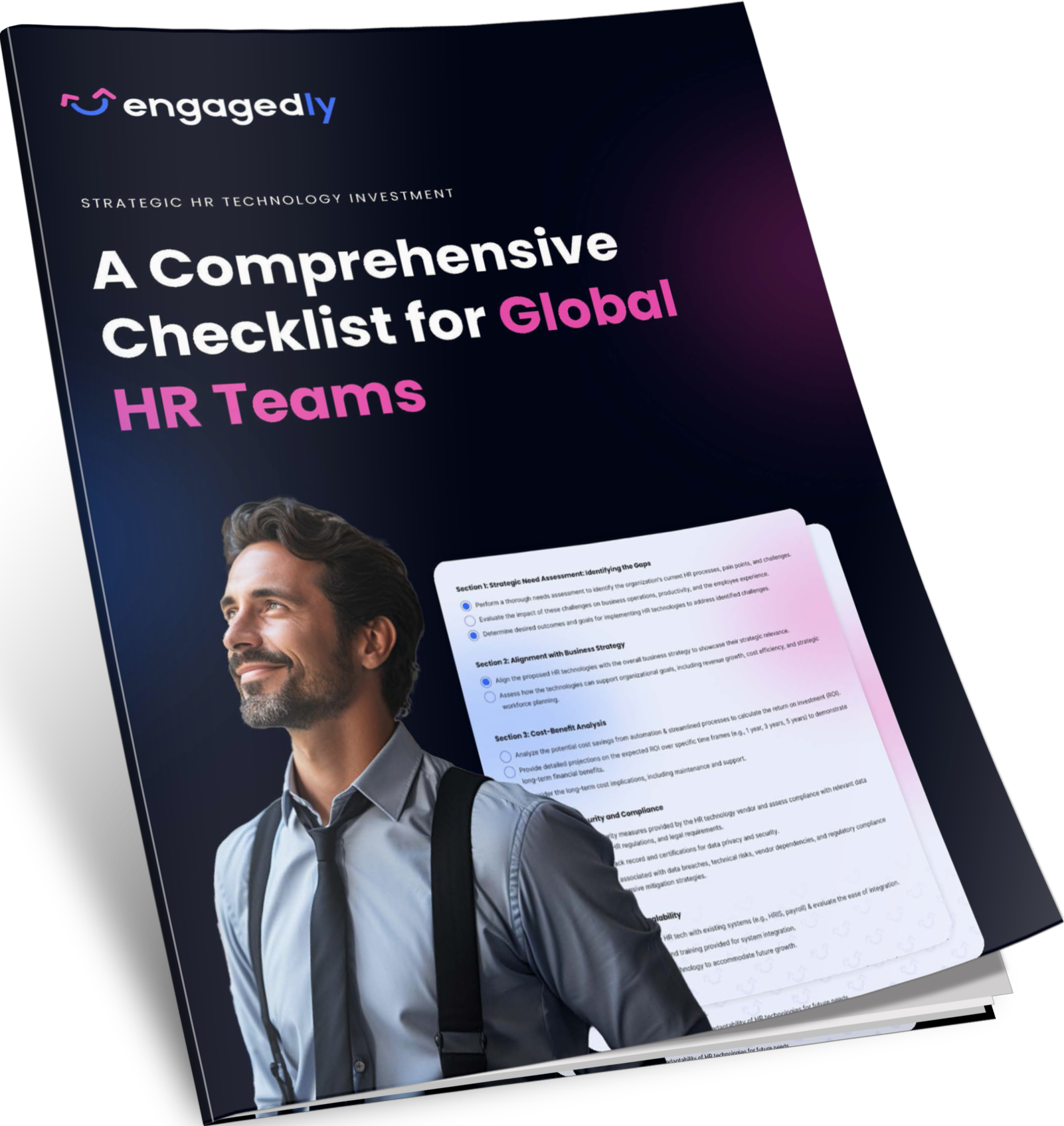Even before the COVID-19 pandemic struck the world in 2019, remote work was becoming increasingly popular. More and more companies realized the benefits of decentralization as well as letting people work from home. But, like with anything else, remote work comes with its own problems, mainly disengagement. It’s very difficult to keep employees engaged from a distance, but it’s also extremely vital to do so.
In the absence of proper employee engagement, your employees will become demotivated and work less effectively. Many companies already struggle with maintaining workplace engagement, but it’s especially difficult in remote work situations. But don’t worry, we’ll guide you on how to maintain workplace engagement remotely.
What is employee engagement?
The first thing we need to tackle is understanding ‘What is employee engagement?’. The simple answer is employee engagement refers to your employee’s emotional engagement to your organization and goals. Essentially, employee engagement relates to the degree to which your employee is committed and connected to your organization.
Employee engagement is important for your business because it’s definitive in determining the success of your firm in today’s competitive environment. Highly engaged employees devote much greater time and energy towards their work and create better value for your organization. Ideally, you want all of your employees to be highly engaged individuals so that you derive maximum benefits from them.
Engagement vs Satisfaction
Some people confuse employee engagement for satisfaction; the two are not synonyms. Employee satisfaction is different from employee engagement. It refers to the extent an employee experiences a difference between what they expect and what they experience.
Employee satisfaction is also important, no doubt, but it’s very different from engagement. An engaged employee could be unsatisfied, and conversely, a satisfied employee could be unengaged.
Both employee engagement and satisfaction are subjective feelings. They often coexist, and they’re even connected to an extent. But the key difference is that employee engagement involves a relationship between you and your employee, but employee satisfaction does not.
In other words, employee engagement is dependent on the employee’s relationship with their organization. Employee satisfaction, conversely, does not depend on the employee’s relationship with their company.
Why you need both engagement and satisfaction?
Like we said, an employee does not need to be satisfied to be engaged, nor do they need to be engaged to be satisfied. You should approach each of these two feelings separately while understanding that both are important.
It’s very important to understand the difference between satisfaction and engagement, and especially to understand which feeling happens when. A satisfied employee will not necessarily have to invest a large amount of effort in their work. In fact, an employee could be satisfied while performing only the bare minimum.
As such, it’s not enough for your employees to be satisfied, but you also have to make sure that they’re engaged. When your employees are engaged, they’ll work better.
Qualities of engaged employees
Now that you’ve understood why employee engagement matters, and you are familiar with the difference between engagement and satisfaction, it’s time to talk about the qualities and benefits of engaged employees.
Takes initiative
Engaged employees seize the initiative. Because of their faith in their company and belief that they will be properly rewarded for their efforts, highly engaged employees will strive to achieve above and beyond what’s expected of them.
In contrast, disengaged employees will lose interest in their work. Because of their certain pessimism, disengaged employees will not want to devote any time or effort at all towards work.
Also, engaged employees are the most productive and able to improve and learn. Their certain optimism propels these employees to devote themselves to gaining new knowledge and learning more.
Whereas you’ll find that disengaged employees not only actively avoid learning new material or improving their skills, but over time, their existing skills grow weaker from lack of sharpening.
Effective Communication
Engaged employees are active communicators who enthusiastically share their opinions and contribute to workplace meetings and discussions to advance company interests.
Disengaged employees, on the other hand, will avoid every possible interaction they can with management and relegate themselves to a corner, away from everyone else.
Engaged employees will actively socialize with team members during working hours and build strong professional relationships with others.
Meanwhile, disengaged employees will treat their coworkers poorly, hardly communicate with them, and show complete disinterest in talking to others in the company.
Positive Attitude
A positive attitude is one of the best signs of an engaged worker and one of the greatest benefits of employee engagement. Having a positive attitude allows workers to invest far more energy and enthusiasm into their work, generating greater returns for your company. A positive attitude by a single employee also contributes to an overall improvement in the company morale.
Conversely, a chronic negative attitude is one of the most telltale signs of a disengaged employee. Disengaged employees will develop a pessimistic outlook on work and view it as little more than a ‘necessary evil.’ When employees think in such a cynical manner, they’re far less likely to actively invest themselves in their work. Pessimistic attitudes by a single employee also damage company morale.
Productivity oriented
Because of their positive outlook on life, engaged employees will devote substantial time and energy towards improving their productivity. Engaged employees fully believe that focusing on their productivity is one of the most critical aspects of their profession and that productivity improvements translate to real-world benefits.
Disengaged employees will care little, if at all, about their productivity. Their bleak outlook on work convinces them that they will not benefit no matter how much time and effort they invest in their productivity. As such, disengaged employees will actively lose their productive abilities, and their productivity will decline over time.
What drives employee engagement?
Employee engagement is built upon a foundation of trust, opportunity, and consistent performance. Building employee engagement requires a substantial emotional and resource investment by management.
Manager Employee Relationship
Manager-employee relations is the dominant contributor to employee engagement levels. Your employees need to have a good relationship with management, which entails being given appropriate treatment and sufficient opportunity to address their concerns. Therefore, you need to prioritize developing good relationships between employees and management that are based on mutual respect and understanding.
Intrinsic Motivation
Every individual has a level of internal or ‘intrinsic’ motivation that they derive from their personalities and ambitions. Each of your employees has an intrinsic motivation that affects their engagement levels.
You need to understand that you cannot always change an employee’s engagement level by as much as you want. Some employees will react better to attempts to foster engagement than others because they’re just more internally motivated.
Leadership
Leadership is an invaluable component of encouraging employee engagement, since employees often receive inspiration from their leaders. Good leadership offers employees hope for future improvements in addition to increased confidence in the company’s overall direction.
Charismatic leadership can also do much to inspire and encourage employees, raising their morale and helping them stay engaged with the company.
Performance Management
Performance management is an aspect of management that involves measuring an employee’s performance over time. Effective employee management can raise employee engagement levels markedly since performance management allows employees to understand their position in the company better and develop the perspective they need to improve themselves.
Building and Sustaining Employee engagement For remote
Unsurprisingly, maintaining employee engagement in remote working arrangements has become increasingly difficult for managers across the world. The loss of social interaction and organized workflow caused by remote work makes it especially difficult to maintain engagement.
That being said, it’s not impossible to build a highly engaging remote work environment by following these steps:
Monitor Workload
Employees with excessive workloads are the most susceptible to disengagement. As such, have your managers place a special emphasis on monitoring workload levels to make sure no employees are overburdened. It’s also important to be sure no employees are under-burdened as well, since it can lead to dissatisfaction with the workplace.
Have a Consistent Meeting Schedule
Having routine work meetings can be difficult in a remote working scenario. But it’s especially vital to have routine meetings with remote employees. These meetings are a valuable way for management and employees to communicate with one another and the employer and the organization.
Make Sure Your Employees Connect
In remote work scenarios, people are far less likely to know or bond with one another. You need to correct this by encouraging all your employees to speak with one another and providing your team with time to acquaint themselves. Having positive professional relationships with their coworkers is one of the best ways for employees to develop positive engagement with their companies.
Reward Efficiency
Sometimes, the best way to encourage workplace engagement is to provide practical benefits and incentives. Occasionally rewarding the most engaged employees with bonuses or benefits is one of the most effective ways to boost their productivity and showcase to other employees that the best way to improve their office standing is to become more engaged.
Cultivate a Healthy Remote Work Culture
Workplace culture has a dominating effect on people engagement at work. As such, you need to make sure your remote workplace culture is positively oriented and can provide your employees with the most positive reinforcement.
Your employees need a work culture that positively stimulates them, convinces them of future prospects, and emphasizes the positive aspects of remote work for this company. You want to create a work environment where employees actively want to retain their position with you.
Identify Technology Needs
Using productivity and communication tools is vital for any remote working arrangement. One of the best ways to take advantage of that fact for employee engagement is to purposefully use those applications that your employees support and give positive feedback to.
Consistently speak to your employees about how they feel about their current tech arrangements and whether or not they need any support. Employee engagement will rise when employees see that organization gives importance to their opinions.
Conclusion
In conclusion, maintaining people engagement at work is vital if you want to maintain workplace productivity. Engaged employees produce the best results, but engaging employees in remote working scenarios is not easy. Generally speaking, the best way to improve remote workplace engagement is to increase communication, monitor employee performance, actively take employee feedback, and carefully monitor employee performance. It will prevent employees from taking stress and overburdening themselves.
Author
Srikant Chellappa
CEO & Co-Founder of Engagedly
Srikant Chellappa is the Co-Founder and CEO at Engagedly and is a passionate entrepreneur and people leader. He is an author, producer/director of 6 feature films, a music album with his band Manchester Underground, and is the host of The People Strategy Leaders Podcast. He is currently working on his next book, Ikigai at the Workplace, which is slated for release in the fall of 2024.






